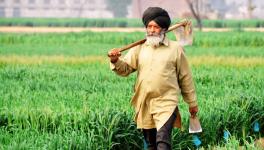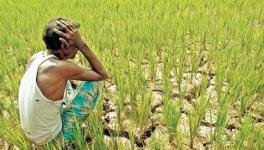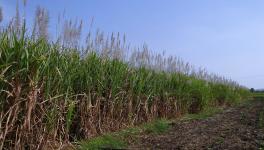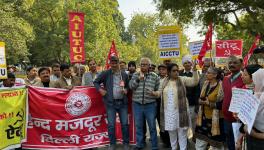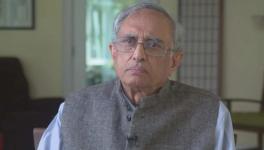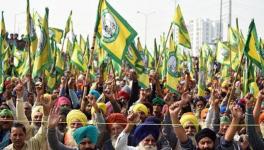Haripal to Haldia – Delhi Protests Energise Farmer Jathas in West Bengal
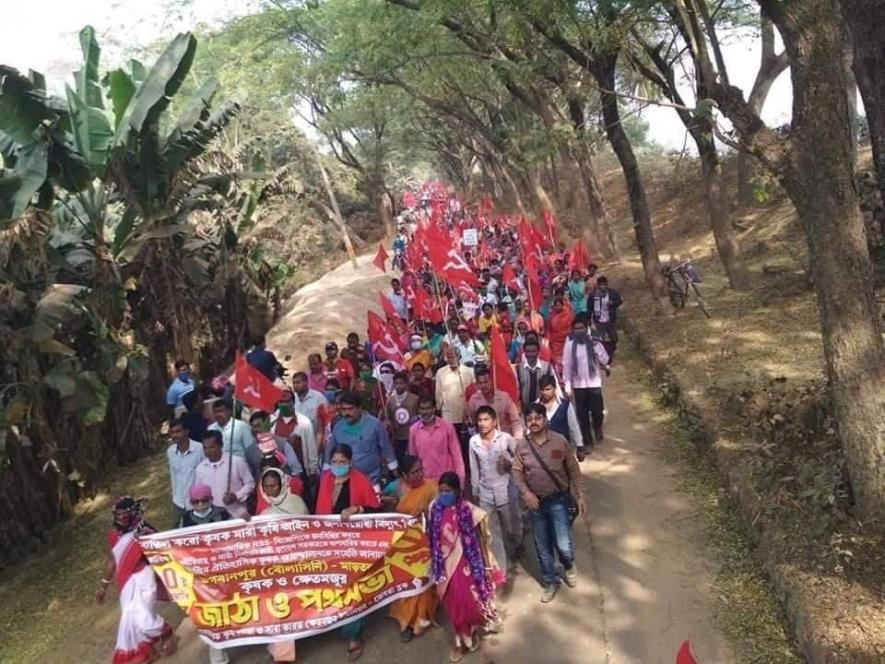
Kolkata: The ongoing protests by farmers in Delhi seem to be resonating in West Bengal, with the paddy growers in the state gaining some advantage in terms of getting higher price for their crop as well as the Haripal Kisan Mandi decreasing the percentage of dhalta (extra) grain that farmers have to give to discount moisture content, from 15-16 kilogram earlier to 5-6 kg now. For example, earlier, for every 60 kg, farmers had to give 5 kg as dhalta (extra) to the procurement agency.
The All India Agricultural Workers Unions in West Bengal said before 2011, when cooperative societies used to buy paddy, this 5-20 kg of dhalta (extra) forced a variation in paddy prices per 100 kg, which always went unnoticed. Now, getting the amount of dhalta lowered depends a lot on the intensity of the farmers’ movement in the state, it said.
The spur in farmers’ movement throughout rural West Bengal is, therefore, paying off in terms of such gains. In Haripal, during one such jatha (walkathon), the farmers stopped the kisan mandi from taking higher dhalta, after which there was a discussion with the Block Development Officer, the rice mill owners, mandi operators and others, where the farmers questioned the logic of taking 15-20 kg as excess grain or dhalta.
Finally, the dhalta was fixed at 5-6 kg. The All India Kisan Sabha also ensured that registration of all farmers was done in chronological order only in the Haripal Mandi.
Meanwhile, jathas are being held in 25 blocks of East Medinipore district in 3,765 villages covering 223 gram panchayats. In Nandigram, copies of the three controversial farm laws were burnt in the main market area by protesting farmers.
In West Medinipore district, in 39 areas, protests and street corner meetings were held. Such programmes were also held in Hooghly, Tarakeshswar, Purshura Dhanikhali, Dapur, Singur, Pandua, Kamarpukur, Magra among others.
In South 24 Parganas district, the system of giving dhaltas still persists. Arun Mondal, a resident of Chhotoshibpur village near Kakdwip, told NewsClick that villagers are caught between “
excesses” of the ruling Trinamool Congress and the Bahratiya Janata Party, whose government at the Centre is pursuing “anti-farmer” policies, such as the new farm laws, as well as fanning communalism.
Emboldened by the protests by farmers throughout the country against laws, farmers in interior areas of the state are also raising demands of lowering the dhalta as well as ensuring price parity while buying paddy across the state by following the minimum support price (MSP) route.
In Punjab or other states, over 60% farmers get to sell their produce on MSP while in West Bengal, this number is less than 20%, Tushar Ghosh of the All India Agricultural Workers Union said.
“The middleman here play spoilsport and it is to be seen whether the wrath of farmers turns the tide against the middlemen in the state, Ghosh said.
Many of West Bengal farmers who had gone to New Delhi to express solidarity with farmers of Punjab and Haryana, have returned and are reaching out to villages, citing their experience of the protests at Delhi’s borders and explaining to them the adverse impact of the farm laws on agriculture.
“The protests in Delhi are electrifying rural as well as urban audiences in West Bengal,” said AIKS leader Tapas Sinha, who recent returned from Delhi.
Get the latest reports & analysis with people's perspective on Protests, movements & deep analytical videos, discussions of the current affairs in your Telegram app. Subscribe to NewsClick's Telegram channel & get Real-Time updates on stories, as they get published on our website.









